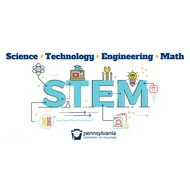Learn 3D Design Using Tinkercad
(View Complete Item Description)This series of lessons will teach all of the key features in Tinkercad, a free, web-based 3D design platform. When you have finished the lessons you will have a comprehensive knowledge of how to design/draw in 3D. After that all you need is practice to improve your skills.
Material Type: Activity/Lab, Diagram/Illustration, Interactive, Lesson, Lesson Plan, Teaching/Learning Strategy, Unit of Study




















